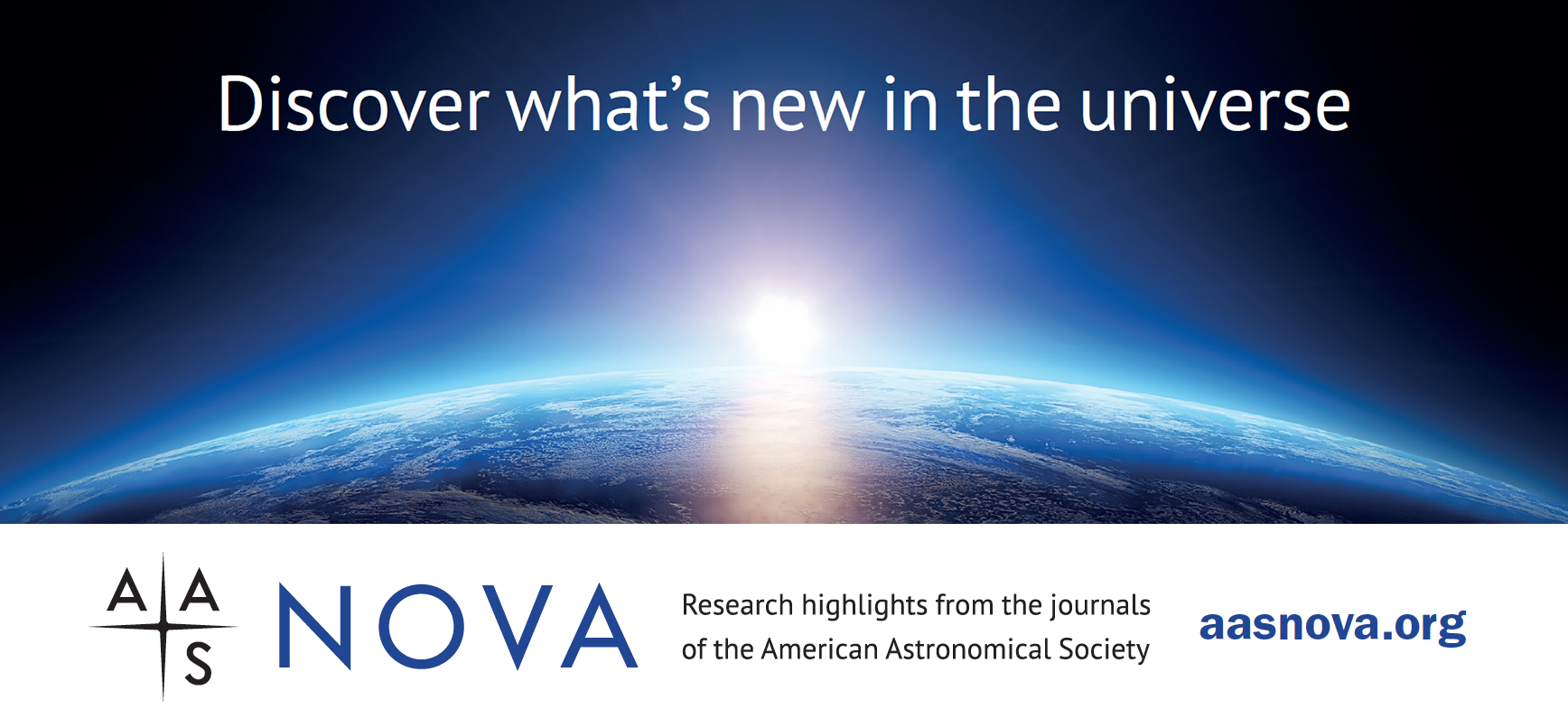Highlights from AAS Nova: 7–20 April 2024

Kerry Hensley American Astronomical Society (AAS)
AAS Nova provides brief highlights of recently published articles from the AAS journals, i.e., The Astronomical Journal (AJ), The Astrophysical Journal (ApJ), ApJ Letters, ApJ Supplements, The Planetary Science Journal, and Research Notes of the AAS. The website's intent is to gain broader exposure for AAS authors and to provide astronomy researchers and enthusiasts with summaries of recent, interesting research across a wide range of astronomical fields.

The following are the AAS Nova highlights from the past two weeks; follow the links to read more, or visit AAS Nova for more posts.
19 April 2024
Devising a Test for Special Relativity
New research explores a way to probe for cracks in special relativity with a subtle measurement of gamma-ray photons.
17 April 2024
How to Tell Space Rocks from Space Junk
One person's space junk is another's research opportunity: scientists study an artificial object mistaken for an asteroid to understand how to identify these objects in future surveys.
16 April 2024
Ultra-Faint Dwarf Galaxies: Not as Small as We Thought?
Astrobites reports on how astronomers use pulsating stars to look for stellar halos around ultra-faint dwarf galaxies, some of the smallest galaxies in the universe.
15 April 2024
Featured Image: A Suite of Exploding Stars
A new suite of supernova simulations allows researchers to find correlations between the properties of these cosmic explosions and properties of the stars they came from.
12 April 2024
Cosmic Rays Near and Far
How do cosmic rays move through the galaxy? Thanks to data collected by the aging Voyager 1 spacecraft, astronomers are closer to finding out.
10 April 2024
Measuring Ages from Craters on Giant Planet Satellites
The cratered surfaces of our solar system’s moons record impacts reaching back billions of years. How do researchers measure the ages of these surfaces, and what can these ages tell us about how the moons formed?
9 April 2024
Tragic Tidal Disruption Events: How Black Holes Shred Stars
Astrobites reports on a tragic final encounter between a supermassive black hole and a stellar neighbor that came a bit too close.
8 April 2024
Monthly Roundup: Solar Science on a Solar Eclipse Day!
Take a moment to delve into three solar physics research articles to learn how researchers are studying our home star.


